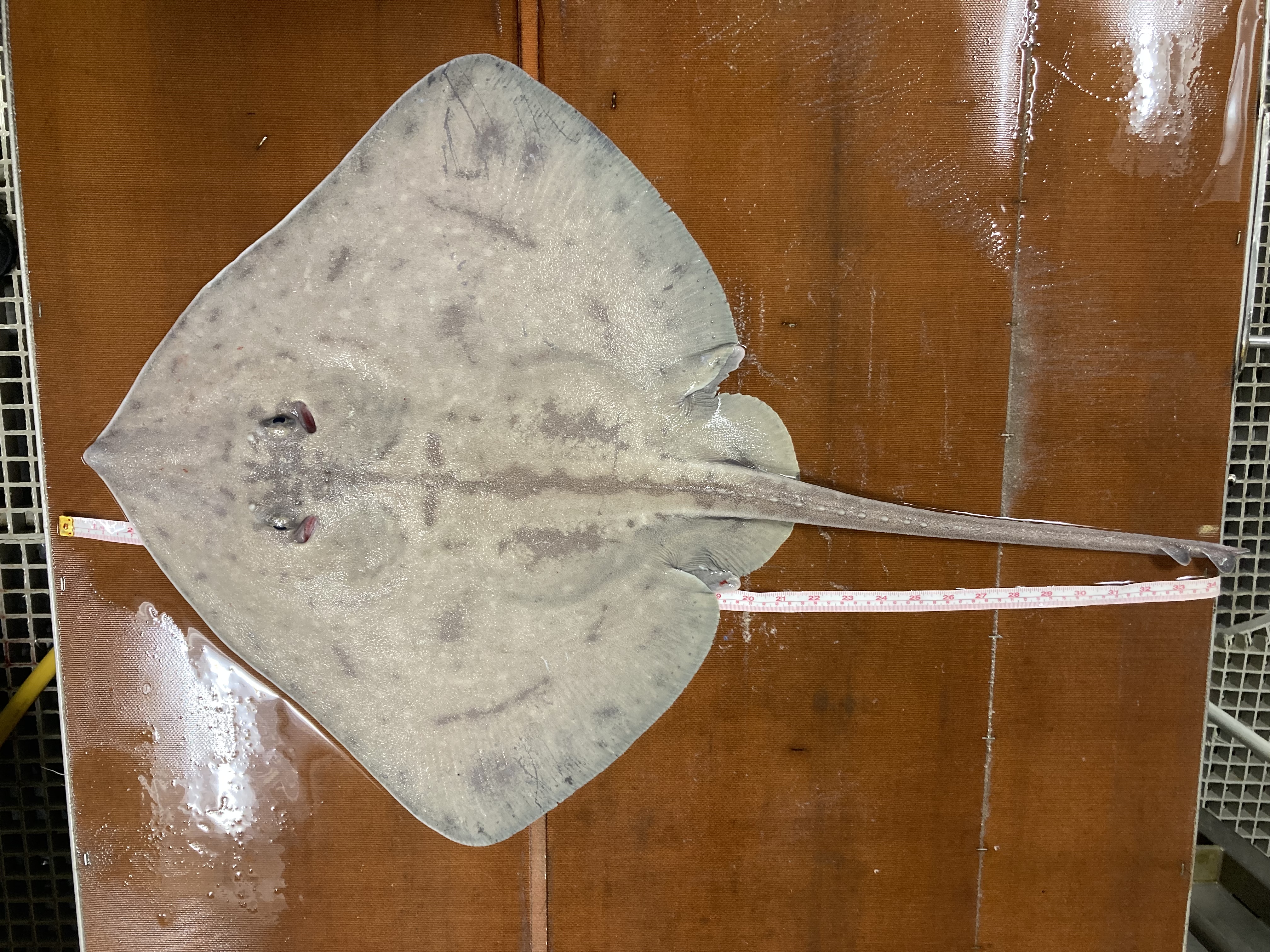
IMAS PhD research is filling vital knowledge gaps about the post-release survival of a deep-sea skate caught as bycatch in the Heard Island and McDonald Island Patagonian Toothfish Fishery, which will improve skate bycatch stock assessments and management.
The Kerguelen Sandpaper Skate is native to these Southern Ocean islands, located on the Kerguelen Plateau, which are over 4,000km south west of Fremantle, Western Australia. It lives in waters down to 2,000 metres and is the most abundant non-commercialised bycatch species in this Australian toothfish fishery, with fishers required to release all healthy skates.
IMAS PhD candidate Colette Appert, who is investigating the post-release survival rates of this skate, said slow growth and maturation make the species highly susceptible to fishing pressure, with post-release mortality expected to be high at these capture depths.
 “While all healthy Kerguelen Skates caught in the toothfish longline fishery are released, we don't know their survival rates and how much the fishery is affecting the population,” Colette said. “We’re focused on calculating their post-release survival rates and analysing movement and behaviour.”
“While all healthy Kerguelen Skates caught in the toothfish longline fishery are released, we don't know their survival rates and how much the fishery is affecting the population,” Colette said. “We’re focused on calculating their post-release survival rates and analysing movement and behaviour.”
Earlier this year, Colette and IMAS researcher Dr Jaimie Cleeland spent 97 days on board Cape Arkona, a Patagonian Toothfish longline-trawling vessel in the waters around Heard Island and McDonald Island, to learn more about the skate’s post-release survival rates, movement and behaviour.
“We tagged 24 skates caught on toothfish longlines with pop-up archival satellite tags that monitor their depth and activity,” Colette said.
“We also took blood samples on 100 skates to study biological traits and capture-related stress that help us predict survival. This is the first study that involves tagging and taking blood samples from a deep-sea skate, so we’re breaking new ground.
“The early results from the tags surprisingly showed much more vertical movement than we expected from a deep-sea skate with a restricted geographic range and a diet of seabed creatures.
 “Past tag recapture data shows the skates have always been re-caught near their initial capture location. This, and their diet, could lead us to think they have a small range and are mostly stationary on the seabed.
“Past tag recapture data shows the skates have always been re-caught near their initial capture location. This, and their diet, could lead us to think they have a small range and are mostly stationary on the seabed.
“However, we found some of our tagged skates changed their depths by several hundred metres, probably moving along the seabed. This is another step towards understanding the population’s spatial footprint and how it overlaps with fishing activities, and the effect this will have on the species over time.”
Colette said working with industry on a project that will have direct applications to Southern Ocean fishery management had made her PhD research fulfilling so far. “It gives me pride to know the skate survival rates from my study will fill crucial data gaps that cause uncertainties in skate bycatch stock assessments within the toothfish fishery, which inform fishery management,” she said. “It will also contribute to research and management of other Southern Ocean fisheries that have skate bycatch.
“I feel lucky to have handled skates that live in 2,000 metres of water and to be at sea for nearly 100 days with no land in sight except Heard Island. I got immersed in the 24/7 schedule of a working fishing vessel and learned so much about gear and techniques.”
 IMAS Fisheries and Aquaculture Centre Head, Professor Sean Tracey said Colette’s research showcased the many fisheries science opportunities available for IMAS researchers and students.
IMAS Fisheries and Aquaculture Centre Head, Professor Sean Tracey said Colette’s research showcased the many fisheries science opportunities available for IMAS researchers and students.
“Colette’s work is an exciting example of how IMAS fisheries research has an important presence in the Southern Ocean,” Prof. Tracey said. “It also shows the opportunities available to our PhD students in this unique scientific space.”
All research was performed under UTAS Animal Ethics Permit 28229.
This project was supported by funding from the Australian Fisheries Management Authority, the Fisheries Research and Development Corporation on behalf of the Australian Government, and the Australian toothfish fishing industry.
The Marine Stewardship Council Ocean Stewardship Fund also provided a student grant.
Images:
Published 6 October 2023